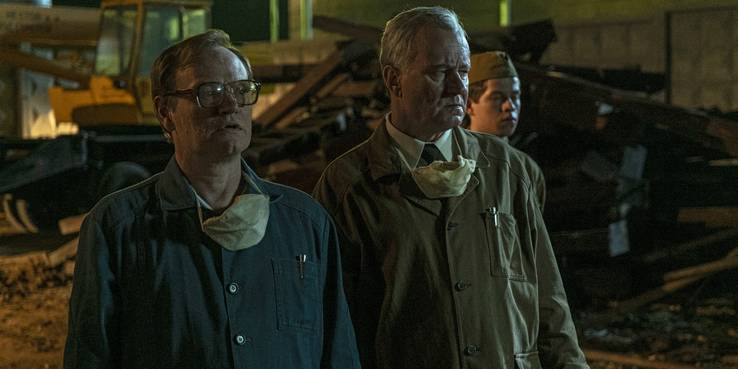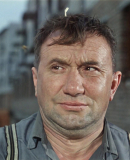İt has been 33 years since the nuclear disaster at the Chernobyl Power Plant, and the incident continues to fascinate audiences. The 1986 incident is the inspiration behind HBO's 2019 latest dramatic miniseries, Chernobyl. The five-part miniseries premiered Monday and will re-enact the climactic events of of April 26, 1986. Although openly "dramatized," how close does the series come to the real thing?
Were Valery Legasov, Boris Shcherbina and Ulana Khomyuk real people?
Both Soviet nuclear scientist Valery Legasov (played by Jared Harris) and Soviet Deputy Prime Minister Boris Shcherbina (played by Stellan Skarsgård) are real people; however, Soviet nuclear physicist Ulana Khomyuk (played by Emily Watson) is not. Khomyuk is a fictional character that represents "the dozens of scientists who helped investigate the crisis as it unfolded," according to an Ars Technica report.
How many people died as a direct cause of the Chernobyl explosion?
Aside from the lasting dangers of the radioactive explosion, the initial terror of the incident is portrayed rather accurately in the miniseries. During the real-life accident, the response was extremely disorganized and delayed. Shcherbina noted at the time that it "wasn't worth" alerting officials. The evacuation didn't start until more than a day after the explosion.
The creative team behind the show strove to capture the atmosphere of fear on that day, especially in the portrayal of real-life firefighter Vasily Ignatenko. While a real character, Ignatenko also represents the quick decline of responders' health without proper preparation. "All in all, over 600,000 people were sent in to clean up Chernobyl. All were exposed to extreme doses of radiation, shortening their lifespans. More than 4,000 died from radiation-caused cancers, and 70,000 were left disabled," according to a Refinery29 report.

What was released when Chernobyl exploded?
"Every atom of Uranium is like a bullet," Harris' character noted in the series. "Penetrating everything in its path–metal, concrete, flesh. Now, Chernobyl holds over 3 trillion of these bullets." "Some of them will not stop firing for another 50,000 years," he added. While attention-grabbing, it is not clear that this is what Legasov actually said, or if this "bullet" radioactive material was actually the material released as a result of the explosion. The full story of Chernobyl wasn't released until several years after the initial incident. According to history.com, the buildup of Xeon gas was to blame for the nuclear plant's explosion. Xeon is defined as "a colorless, dense, odorless noble gas found in the Earth's atmosphere in trace amounts," but most accounts of Chernobyl simply list what was released as "radioactive material."
What are the resulting health effects of the explosion?
Chernobyl was the first radioactive event to result in death. While several reports suggest radiation-induced chances of leukemia or solid cancer, the evidence available today only strongly connected cases of thyroid cancer among children and adolescents in the area, according to the United States Nuclear Regulatory Commission's report. "Many children and adolescents in the area in 1986 drank milk contaminated with radioactive iodine, which delivered substantial doses to their thyroid glands," the report reads. "To date, about 6,000 thyroid cancer cases have been detected among these children. Ninety-nine percent of these children were successfully treated; 15 children and adolescents in the three countries died from thyroid cancer by 2005." "The available evidence does not show any effect on the number of adverse pregnancy outcomes, delivery complications, stillbirths or overall health of children among the families living in the most contaminated areas," the report continued. "Experts expected that some cancer deaths might eventually be attributed to Chernobyl over the lifetime of the emergency workers, evacuees and residents living in the most contaminated areas. While cancer deaths have generally been far lower than initial speculations of tens of thousands of radiation-related deaths, a recent study of a cohort of emergency workers found a statistically significant relative risk of solid cancer incidence and mortality."









